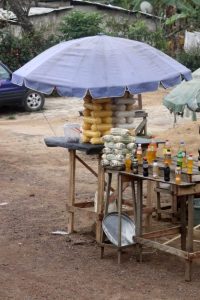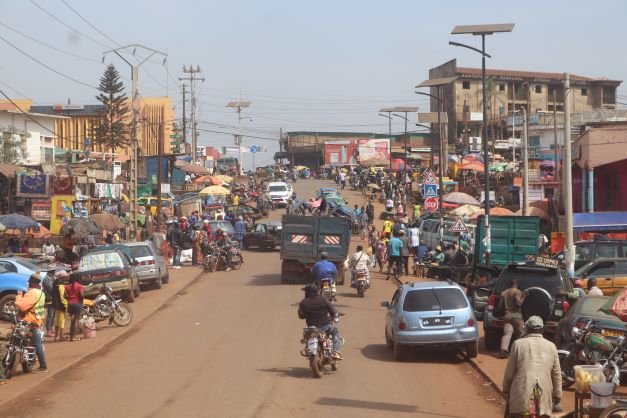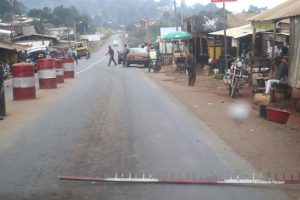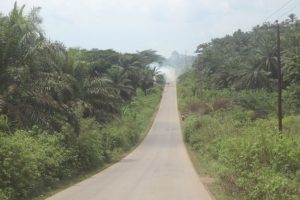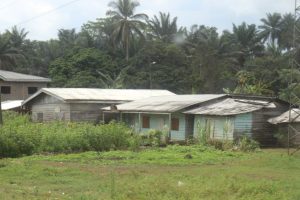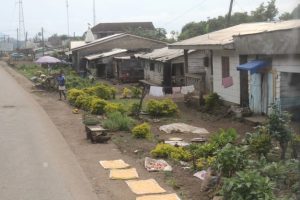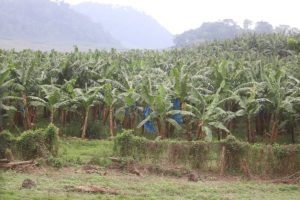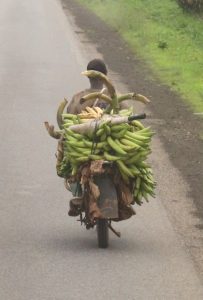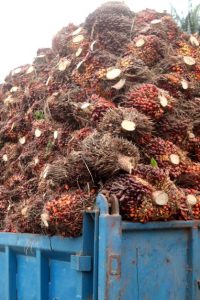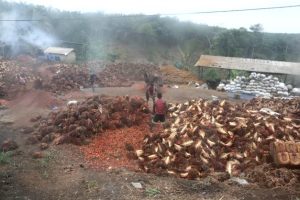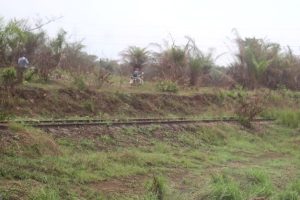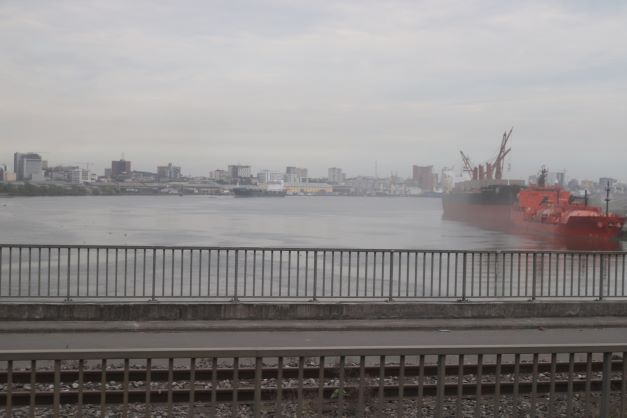The opportunity to post updates to this diary very much depends on 1) having the time, and 2) having reasonable internet connection. Both are generally in short supply, which does affect the regularity somewhat. Sorry!!
We are on our own now. Mayou left yesterday, as we reckoned that we are travel-savvie enough to take the bus to Douala on our own, and spend our last days in Cameroon there. Are we? I have reserved tickets for the 8 am bus. The lady next to the hotel, who provides breakfast, didn’t turn up, so we leave for the bus station at 7.15, to have our now familiar omelette and baguette there. The bus is ready, and the omelette takes ages, so we get a bit nervous. Silly we. Just before 8 we rush out the restaurant to catch the bus. Which is still closed. At 8.15 they start accepting the luggage, but the bus is by far not full enough to leave yet. In any case, we are fully parked in, with cars and motorbikes all around. As by a miracle, by around 9.15, the area in front of us slowly starts clearing. But not until a quarter to 10 are we actually leaving. Give me Alonso anytime: departure 6 am sharp.
Most of the roads in this part of Cameroon are actually quite good, perhaps the result of road toll that needs to be paid at regular intervals. A toll station is great fun. To make sure the driver doesn’t speed through, the road is blocked with very unfriendly-looking spikes, which will tear apart any tire. The tax is usually no more 500 CAF, less than 1 Euro, and the road is in any case blocked by a swarm of sellers, all in official yellow shirts, it seems, that try to get rid of mangos, avocados, drinks anything really. A bus is a particularly welcome target.
Despite the toll, there are still quite a few bad patches in the road, especially the closer we get to Douala. We have crossed the mountains, where the economy is dominated by bananas, pineapples, bananas, papayas and bananas. The houses have changed from the stone and mud to typical wooden houses, often with attractive verandas and painted in pastel colours. Closer to the city palm trees, and palm nuts, play a role – which ultimately produce palm oil, I think -, as well as manioc flower, sold in plastic rolls neatly stacked along the road. For part of the route we follow an old rail track, but that doesn’t seem in use anymore.
And then we arrive in Douala, through a predominantly industrial area on the north side of the Wouri River, and across the bridge we drive into the seemingly endless ‘emboutillage’, the Douala traffic jam. Had we already picked up some delays at leaving, we now spent another hour reaching the bus terminal. Where we arrived towards 5.30 pm. A full day’s travelling. Not different from our overland truck experience!
Next: Douala
